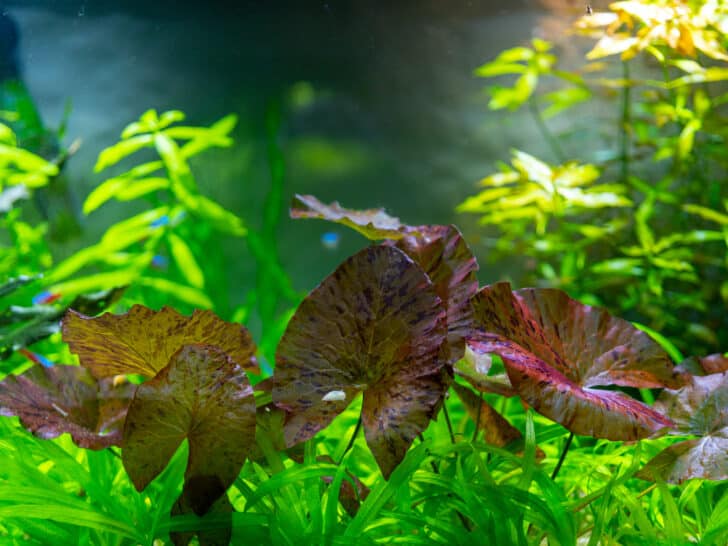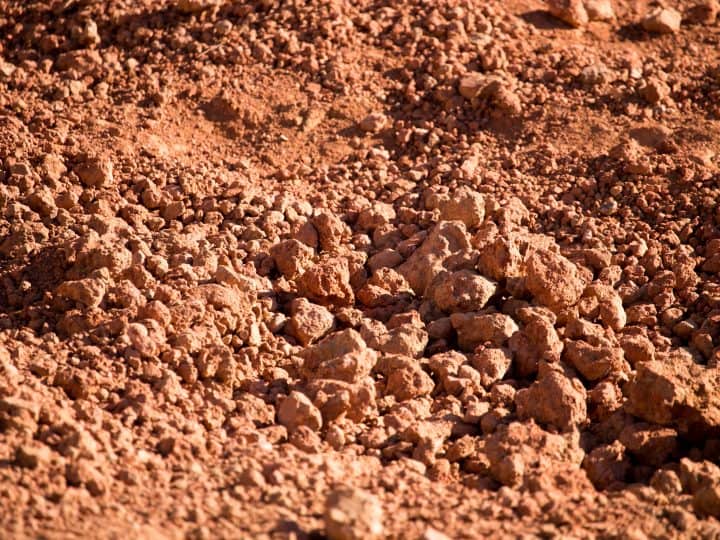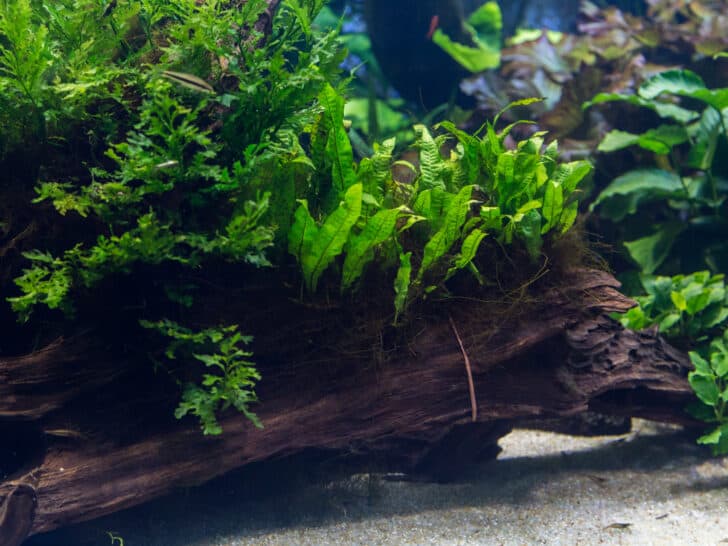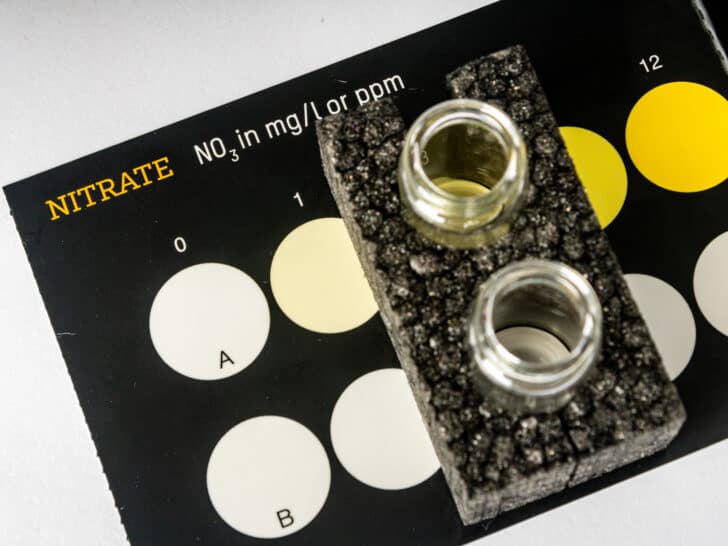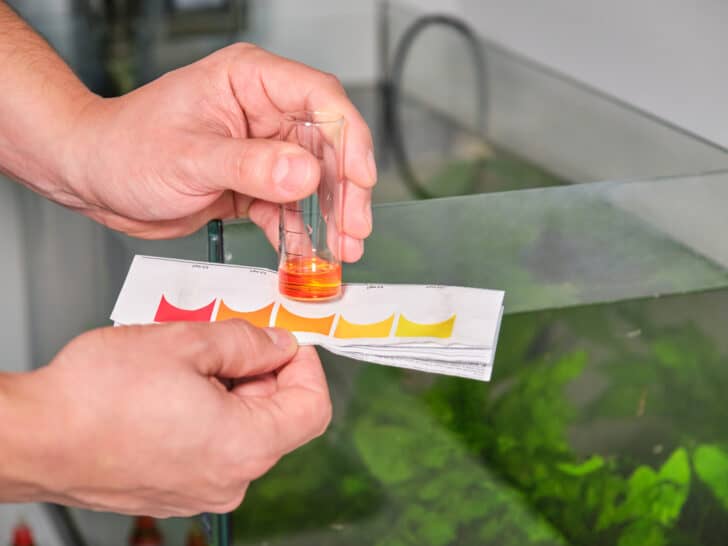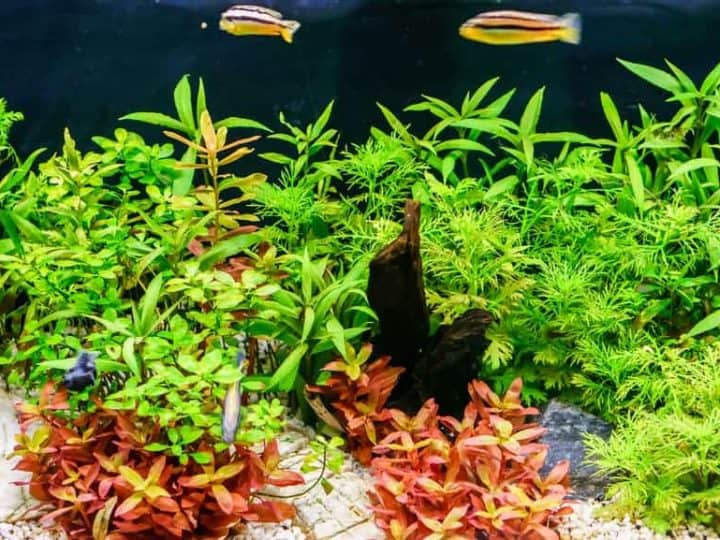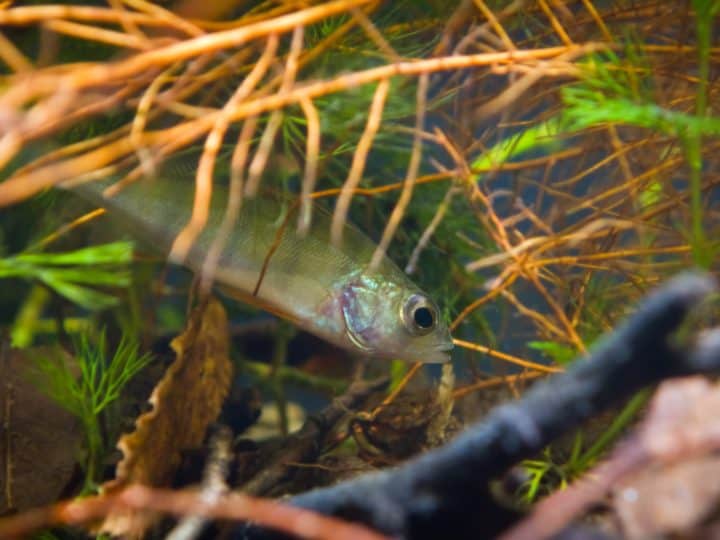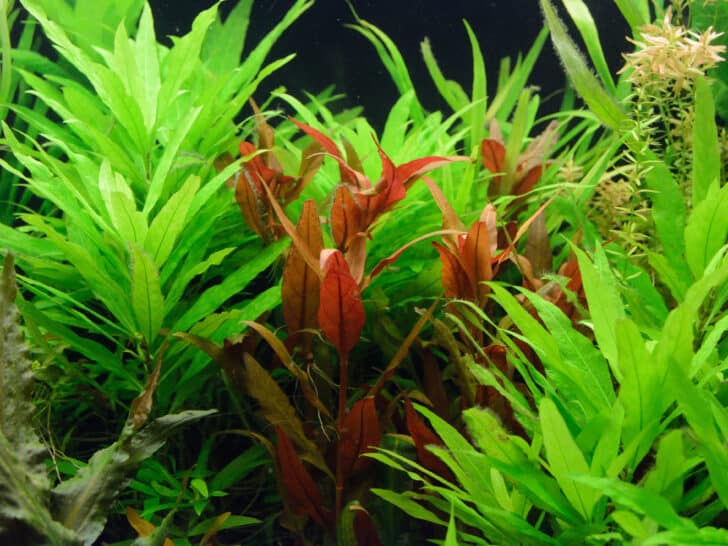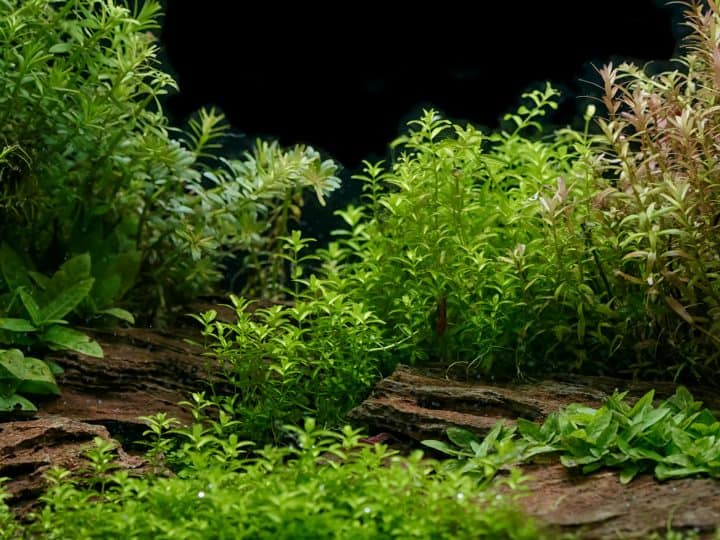A new aquarium is an excellent addition to any home, providing a peaceful and de-stressing pastime of watching your little underwater ecosystem thrive. Before you bring home your fish, you’re going to want to make sure you choose the right plants for your tank and make sure they’re planted correctly. In order to do so, there are two questions you need to consider – how do you plant aquarium plants, and do they need soil?
Quick Answer
Aquarium plants need to be planted in a mixture of substrate materials such as soil, sand, or gravel to promote good aquarium health. Soil substrate helps plants root easily and acts as a sturdy anchor, so they stay upright. It also provides them with the nutrients necessary for optimal growth.
In the rest of this article, I’ll show you some tips, including how to prepare your tank, and what to consider to make your aquatic plants a success. I’ll start at the beginning of the aquatic planting process and help you find out if you really need to have soil for your plants.
Is Soil Necessary for Your Aquarium Plants?
When you’re gardening in your backyard, you typically lay out soil in a plant bed, dig small holes to place your plants in, and bury them deep enough so the roots can stretch out and take hold of the Earth, helping to anchor your plant so it can grow sturdy and tall. You feed your plants fertilizer and make sure to use soil that is enriched with the proper nutrients to keep your plants and flowers healthy.
Aquarium plants also need soil to grow well. They need nutrients from the soil and the right kinds of fertilizers to stay happy and healthy. However, you cannot use the same soil you use for land plants in your aquarium and must use aquarium soil instead.
Aquarium soils like Landen Aqua Soil Substrate (available on Amazon.com) contain the nutrient mix that aquatic plants need to grow well. These necessary nutrients include iron, nitrogen, potassium, phosphate, magnesium, and calcium.
However, keep in mind that each plant has unique nutritional needs, and each soil substrate has a different mix of ingredients. Different aquarium plants need different types of soil substrate. For example, the Amazon sword plant needs a sand substrate to thrive. However, Elodea (also known as waterweeds) can grow easily in any type of substrate.
One mistake many people make when shopping for aquarium soil substrates is choosing a sand and gravel substrate instead. The issue with these substrates is that they don’t provide any nutrients for your plants. That said, they’ll be beneficial to other life in your tank.
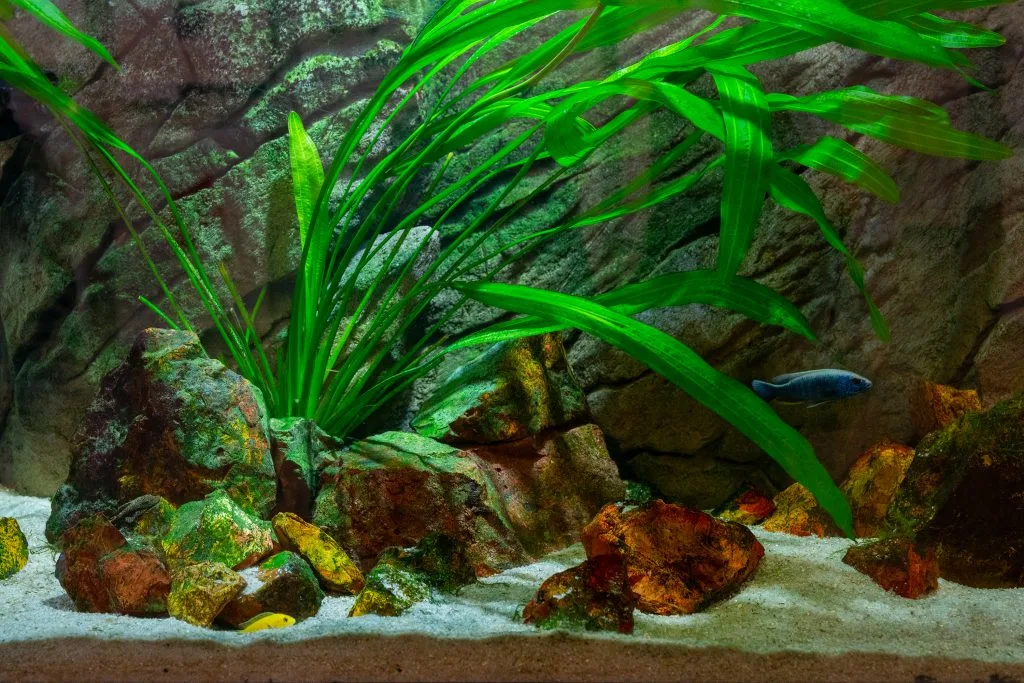
For example, bottom-feeder fish will be able to find sustenance in a fine, soft sand substrate and gravel substrate. Although it has no nutritional value to your aquarium’s ecosystem, it can be a less expensive option to line the bottom of your tank, and the weight of the gravel will help to keep your plants in place.
Root Tabs for Soil Substrates
Soil substrate will provide beneficial nutrients to your plants. However, not all substrates offer all the nutrients your plants need. Additionally, the nutrients will run out at some point. At this point, you’ll either have to change out the soil in your tank or find another solution to the problem.
That’s where API Root Tabs (available on Amazon.com) come in. These tabs provide you with the answer to all your aquatic plant fertilizing problems.
All you have to do is stick one tab in the soil for every 30 square inches (193.5 square centimeters) of aquarium space. The tabs will provide your plants with all the nutrients they need to survive by releasing potassium, iron, and carbon into the substrate.
These nutrients will then get absorbed by the roots. They can literally be a lifesaver, especially when your soil substrate has been drained of all the tasty nutrients that your fish require.
They’re also a great option if you’re using zero-nutrient sand and gravel instead of soil substrate. In these situations, you’ll have to use root tabs from the start, making sure to add new tabs every month for the best results.
Pros and Cons of Aquarium Soil for Plants
It’s important to keep in mind that substrate soil isn’t perfect, and there are both pros and cons to it. While I prefer using soil in my aquarium, it may not be the best fit for you and your aquatic plants.
Aquarium Soil Pros
- Soil substrates contain nutrients. You won’t need to add additional nutrient-imparting products such as root tabs because the soil is already doing the job.
- Soil substrates can help alter the water for the better. Aquarium soil may help to neutralize the water’s pH balance, and help to make the water softer, which can be beneficial to tropical fish.
- It’s great for carpet plants. If you plant a carpet plant in your aquarium, the substrate will help it grow and spread easily. If you’re looking for such a plant, I recommend the Wpmlady 2 Pack Aquarium Small Leaf Grass from Amazon.com. This will grow easily and quickly – all you need to do is spread out the seeds amongst the substrate and wait for it to grow. Before you know it, you’ll have a leafy and green aquarium floor.
- Soil substrates create positive bacterial growth. Bacteria that form on the soil can benefit the aquarium’s ecosystem.
- Soil substrates release nutrients to the water, providing long and reliable fertilization. It will not only provide nutrients to your plants, it’ll also add helpful nutrients to your water.
Aquarium Soil Cons
- Soil can become messy and create murky water. If the soil is disturbed by fish or gets stirred up, this can create a cloudy film over the water, creating visibility issues and becoming unpleasant to look at.
- Often a cap layer of plain gravel is necessary. To keep the soil from being disturbed, you may have to spread a layer of gravel over the soil to keep it intact, which will take up more space in your tank.
- The effect of the soil substrate runs out after two to three years. Once your aquarium soil has run its course and plants are no longer receiving nutrients, your best option is to empty your tank, lay down new soil, and replant your plants. This will save them from developing yellow leaves and diseases.
- Aquarium soil can be an expensive option. Unlike sand and gravel, soil substrate tends to be expensive to buy, especially considering you’ll have to replace it every couple of years.
As you can guess, the choice between substrates you use is up to you. Soil substrate may work for some aquarium owners, but sand or gravel might be the better choice for others.
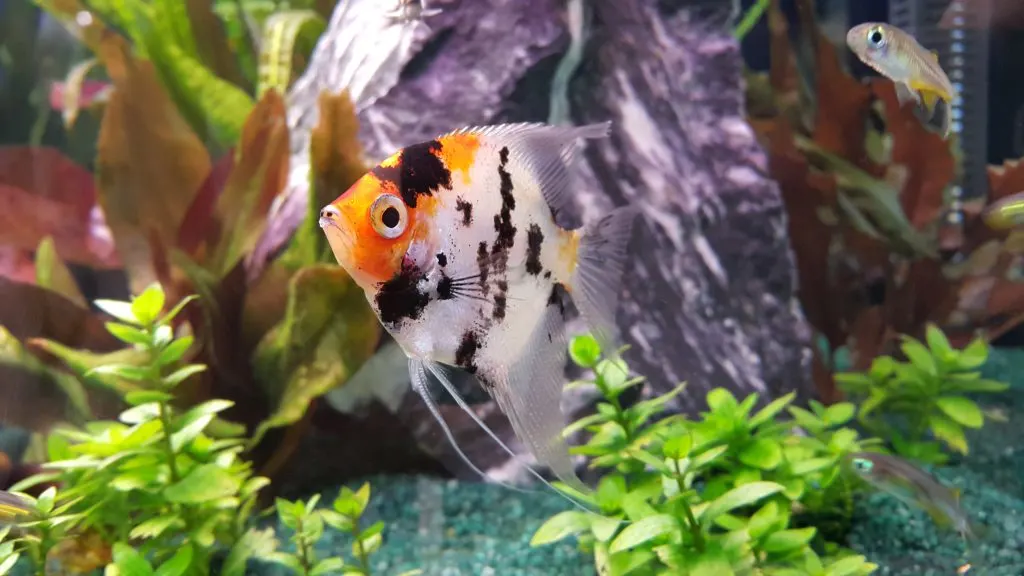
Depending on which plants and animals you choose for your aquarium, you may end up going with a different substrate than you initially decided on – after all, whatever works for your aquatic ecosystem will always be the best option!
Aquarium Soil Alternatives
If you’ve decided that aquarium soil isn’t for you, you may be wondering what your alternatives are. Here are some options you can consider that’ll be effective and ensure you have a thriving, flourishing underwater plant ecosystem.
Gravel Substrate
Gravel is made up of small rocks, pebbles, and stones that are uneven in size. The looseness of gravel substrate can be beneficial to plant roots, as it makes it easy for them to find space and wind themselves through the gravel. Due to its comparatively heavier weight, gravel can also act as a better anchor for plants.
It’s important to make sure the gravel substrate you’re placing in your tank doesn’t have any sharp or rough edges. If they’re sharp, bottom-feeder fish may harm themselves while looking for sustenance amidst the gravel.
Gravel tends to be the most common substrate found in tanks due to its inexpensiveness, and it can be dyed to come in a variety of colors to add a particular aesthetic to your tank.
Alternatively, you can go for a more natural look with products such as Gold Pearl Aquarium Gravel Substrate, which is available on Amazon.com. This substrate offers a natural look, similar to the bottom of a riverbed.
Unlike soil, you’ll have to plant root tabs in the gravel to ensure your plants are getting the proper amount of nutrients.
Sand Substrate
Fine, soft, and malleable, sand substrate is ideal for marine life that prefers to stay close to the bottom. Like gravel, sand doesn’t provide nutrients for your aquarium plants, but mixing in a bit of clay will help give your plants what they need without the need for root tabs.
While sand has its benefits, you should be aware that some plants may have a little more difficulty trying to find anchored support in the sand. If you have sand in your tank, make sure to check to see if the plants you’ve chosen for your tank will be able to root in it well.
Unlike gravel, sand isn’t customizable. However, you can find a few different varieties ranging from black to white to pink. Alternatively, if you prefer the natural look, you can opt for Carib Sea Super Naturals Aquarium Sand from Amazon.com. As this sand contains no artificial dyes or paint, it’ll help to give a realistic approach to mimicking the ocean floor in your tank.
Make DIY Aquarium Soil
If you want to use soil substrate but don’t want to spend all your money on soil or if you’re crafty and like to do it on your own, here is a method to create DIY aquarium soil.
For this method, you’ll need topsoil, a bucket and water, a strainer, pottery clay, muriate of potash (potassium chloride), and gravel to lay on top.
- Empty the topsoil into the bucket and mix in water until it’s completely covered with 1-2 inches (2.54-5.08 centimeters) of water on top.
- Leave the water and soil mixture to settle for two days, then drain the water from the bucket.
- Repeat the above steps one more time.
- Spread the damp soil out on a plastic sheet to dry out for two days.
- Repeat the entire process two more times. Doing so will help neutralize fertilizers in the soil that could make your tank dirty and mucky.
- Strain and check the soil for large debris and rocks, and return the soil to the bucket.
- Stir in one-part pottery clay to every ten-parts of water. Combine clay and soil to make a mud-like mixture.
- Spread some muriate of potash on the bottom of the aquarium.
- Lay the soil-clay mixture across your aquarium floor.
- Lay a thin layer or gravel or small rocks of your preference on top of the substrate. Add some gravel on top.
- Fill your tank with water and place plants into the substrate.
The whole process will take at least a week to complete. However, it’s a great option if you’ve got an irregularly sized aquarium, and need less (or more!) soil than you’d get from a commercial brand.
What To Look For When Choosing Aquarium Soil
When making your decision on which aquarium soil to buy, here are some tips to keep in mind.
- Does it help to balance the pH of the aquarium water? Good soil substrate helps keep the water pH balanced at neutral.
- Will it provide nutrients for plant growth? The soil substrate you choose should clearly advertise its nutrients to promote plant growth.
- If you’re planning on including shrimp in your tank, is it beneficial to shrimp?
- Will the plant roots be able to penetrate the soil easily? Roots should be able to easily move through the soil without being disturbed by large chunks of debris.
- Is the soil clay-based? Clay will provide a ton of necessary nutrients for plant growth.
These are, of course, only a few suggestions. Your particular needs for a soil substrate will differ depending on the type of plants you’re looking to include in your tank.
Best Types of Aquarium Soil
Given the multiple options available on the market, it can be challenging to narrow down your list and choose just one. To make it easier for you, here are some of my favorite aquarium soil brands on Amazon.com:
- Fluval Plant and Shrimp Stratum: Gathered from the base of a volcano, this brand is a good choice as it creates a neutral to mild water pH in your tank and is also beneficial to shrimp.
- Landen Aquarium Soil: Made from natural materials from the Earth, this black soil substrate will provide a healthy dose of organic acids and nitrogen nutrients to help keep your aquatic plants strong and vibrant.
- Tropica Aquarium Soil: Made from natural soil extracts, this soil substrate helps to soften water and creates an optimal environment for aquatic plant growth.
Conclusion
After discussing all things aquarium soil and tips for your planted tank, I hope your head isn’t “swimming” with information. Planted aquariums are a great option for people who want to combine a love of fish and plants.
However, in order to ensure healthy plants, you’ll need to add aquarium soil or some other option that provides them with the necessary nutrients. Alternatives you can try include gravel and sand.
Once you’ve got a suitable substrate in place, you’ll have a successful underwater garden with vibrant, luscious plants in no time!

